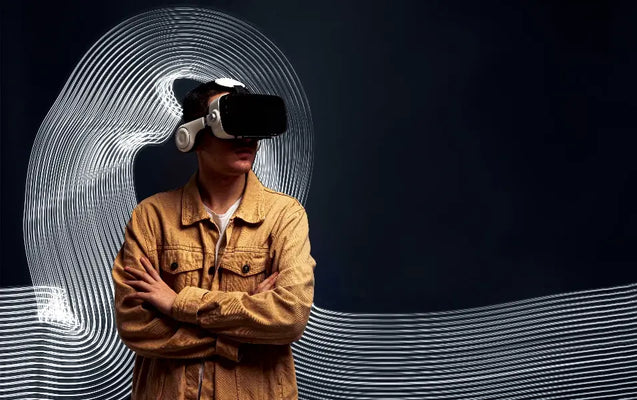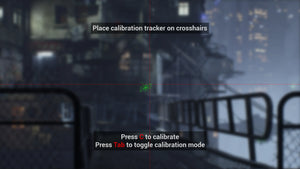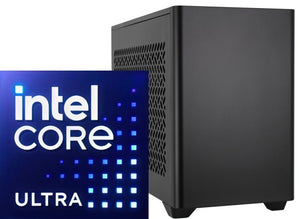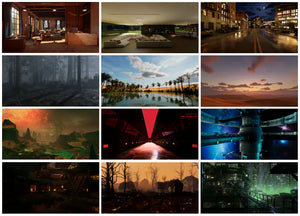Immersive Technology: A Complete Guide by ARWALL

In today’s rapidly evolving digital landscape, immersive technology is redefining how people learn, communicate, shop, work, and create. At ARWALL, we’ve built our reputation as an immersive technology agency and pioneer in virtual production—crafting cutting-edge experiences that merge physical and digital worlds seamlessly.
From 3D immersive technology in filmmaking to immersive technology in education and even its transformative impact on manufacturing, healthcare, and retail, ARWALL stands at the forefront of an industry poised for exponential growth in the immersive technology market.
What Is Immersive Technology?
Immersive technology refers to systems and tools that blend or extend reality to create engaging, interactive environments for users. It covers technologies like Virtual Reality (VR), Augmented Reality (AR), Mixed Reality (MR), and Extended Reality (XR).
As a leading immersive technology company, ARWALL uses these tools to enable environments where people don’t just observe—but participate.
How Does Immersive Technology Work?
The process involves layering digital visuals, audio, and sometimes haptic feedback over real or simulated environments. In immersive technology, MR stands for Mixed Reality—a form where real and virtual elements interact in real-time.
ARWALL’s AI and immersive technology workflows take this further, using artificial intelligence to adapt environments dynamically based on user behavior.
Benefits of Immersive Technology
Implementing immersive systems has numerous advantages across sectors:
-
Increased Engagement – Users become active participants, not passive viewers.
-
Improved Retention – Complex concepts are easier to grasp in simulated environments.
-
Enhanced Collaboration – Shared virtual spaces improve teamwork in remote or hybrid setups.
-
Operational Safety – Risk-free simulations for hazardous environments like mining or manufacturing.
-
Innovative Brand Presence – In retail and entertainment, immersive tech boosts customer experiences.
ARWALL has delivered these benefits of immersive technology to clients in industries ranging from education to global media.
Types of Immersive Technology
While there are many ways to categorize it, the 5 types of immersive technology most recognized today are:
-
Virtual Reality (VR) – Fully simulated digital environments.
-
Augmented Reality (AR) – Digital overlays on the real world.
-
Mixed Reality (MR) – Digital and real elements interact seamlessly.
-
Extended Reality (XR) – An umbrella term for VR, AR, and MR.
-
Holographic Interaction – The form of immersive technology in which the user interacts with a hologram.
Immersive Technology in Education
The immersive technology in the education market is booming as schools and universities realize the power of interactive learning. Immersive technology for education allows students to explore historical settings in VR, conduct virtual science experiments, and collaborate in shared XR classrooms.
ARWALL’s solutions bring immersive technology in education to life, creating customized learning environments that adapt to each curriculum.
Immersive Technology in Retail Market
Retailers are leveraging immersive technology in retail market trends to create next-gen shopping experiences—virtual try-ons, interactive product demos, and AI-driven personalization.
ARWALL helps brands turn stores into experiential hubs, using 3D immersive technology and real-time rendering to captivate customers and increase conversions.
Immersive Technology in Entertainment Market
Entertainment is one of the largest growth areas for the immersive technology market. From VR gaming to cinematic LED volumes for filmmaking, ARWALL has delivered immersive technology in entertainment market solutions that redefine audience engagement.
Our work in virtual production uses immersive environments to replace traditional green screens, reducing costs and expanding creative possibilities.
Immersive Technology Companies & Agencies
The immersive technology market is populated by tech giants, niche immersive technology companies, and specialized immersive technology agencies like ARWALL.
What sets ARWALL apart is our deep integration of AI into immersive systems, making experiences more adaptive and personalized. This AI and immersive technology pairing ensures the environments we build evolve in real-time.
Immersive Technology in Manufacturing Market
In the immersive technology in manufacturing market, ARWALL’s solutions improve training, streamline assembly processes, and enhance quality control. Workers can be trained in simulated environments before touching real equipment—reducing errors and boosting productivity.
Immersive Technology in Mining Sector Market
The immersive technology in the mining sector market uses VR and MR for safety training, equipment operation simulations, and hazard awareness. ARWALL designs experiences that allow miners to practice in controlled virtual conditions, improving workplace safety and reducing operational risks.
Immersive Technology in Healthcare Market
Healthcare professionals are using immersive technology in healthcare market applications for surgical simulations, patient rehabilitation, and mental health therapy.
ARWALL collaborates with healthcare providers to build high-fidelity environments that replicate real procedures, ensuring practitioners are better prepared and patients receive improved care.

US Immersive Technology Market
The US immersive technology market is one of the fastest-growing sectors globally, fueled by advancements in AI, 5G, and high-performance computing.
ARWALL operates at the cutting edge of this market, delivering immersive technology solutions for entertainment, education, corporate, and government clients. Our Los Angeles base puts us at the heart of both Hollywood innovation and Silicon Valley tech culture—allowing us to merge creativity with engineering at the highest level.
The Future of Immersive Technology
The future of immersive technology is about deeper integration, smarter personalization, and broader accessibility. AI will make environments more adaptive, holographic displays will become commonplace, and industries from healthcare to manufacturing will embrace immersive tools for efficiency and innovation.
ARWALL is actively shaping this future—developing tools that merge AI and immersive technology for predictive learning, real-time content adjustments, and hyper-realistic simulations.
Immersive Technology Examples
Some of the most impactful immersive technology examples include:
-
VR-based classroom environments for immersive technology in education.
-
AR-powered product previews in the immersive technology in the retail market.
-
LED volumes and real-time rendered backdrops in the immersive technology in the entertainment market.
-
Mixed reality surgical training in the immersive technology in the healthcare market.
-
Hol0ographic engineering reviews in the immersive technology in manufacturing market.
ARWALL has implemented each of these in real-world projects—bridging the gap between concept and execution.
3D Immersive Technology
3D immersive technology brings depth and spatial realism to interactive environments. Whether used in VR for training pilots, in retail for virtual store tours, or in healthcare for anatomy visualization, it creates a more authentic and engaging experience.
At ARWALL, we pair 3D immersive technology with AI-driven interactivity, ensuring every experience is as lifelike as possible.
Why Choose ARWALL for Immersive Technology Solutions?
As a trusted immersive technology agency and innovation leader, ARWALL doesn’t just deliver hardware—we create entire ecosystems where technology, creativity, and human experience converge.
We’ve pioneered AI and immersive technology integrations, set new standards in virtual production, and executed large-scale deployments in industries from retail to healthcare. When you partner with ARWALL, you’re not just adopting immersive technology—you’re adopting the future.

FAQs on Immersive Technology
Q1: What is immersive technology?
Immersive technology is a collection of tools—like VR, AR, MR, and XR—that create engaging, interactive experiences blending the physical and digital worlds.
Q2: What are the types of immersive technology?
The main types of immersive technology include Virtual Reality (VR), Augmented Reality (AR), Mixed Reality (MR), Extended Reality (XR), and holographic interaction.
Q3: What are the types of immersive learning technology?
These include VR classrooms, AR-based lesson overlays, MR collaborative environments, XR training modules, and 3D simulations for skills development.
Q4: How does immersive technology work?
It uses digital overlays, 3D rendering, spatial audio, and sometimes haptics to create environments users can interact with in real time.
Q5: What is the purpose of immersive technology?
Its purpose is to enhance engagement, improve learning, enable realistic simulations, and create richer, more interactive experiences.
Q6: In immersive technology, what does MR stand for?
MR stands for Mixed Reality, where real and digital elements co-exist and interact in real time.
Q7: How does immersive technology improve work quality?
It improves work quality by enabling realistic training, reducing errors through simulations, and providing instant visual feedback.
Q8: How does immersive technology improve work performance?
By offering interactive, scenario-based learning and real-time data visualization, workers can make better, faster decisions.
Q9: How does immersive technology improve work communication?
It allows teams in different locations to collaborate in shared virtual spaces, improving clarity and reducing miscommunication.
Q10: The form of immersive technology in which the user interacts with a hologram.
This is holographic interaction—where users can see and manipulate holograms in 3D space using AR or MR devices.
Q11: How does immersive technology improve work behavior?
By creating engaging, hands-on training environments, it builds user confidence, reinforces positive habits, and reduces workplace risks.





